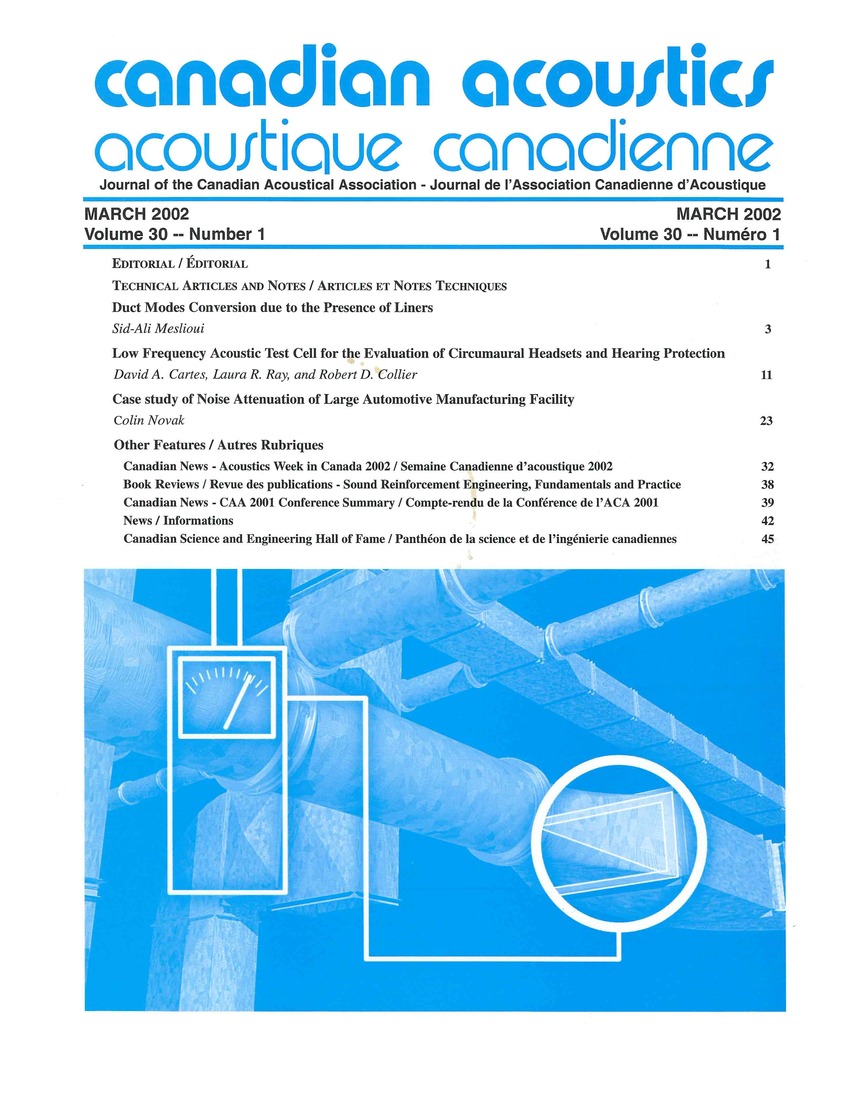Duct modes conversion due to the presence of liners
Keywords:
Acoustic impedance, Acoustic wave propagation, Acoustic wave reflection, Acoustic wave transmission, Attenuation, Ducts, Acoustic duct linersAbstract
This paper deals with the classical problem of transmission-reflection and modes conversion due to the presence of acoustic liners in duct. The model consists of an infinite rectangular duct with an unlined and lined section. The approach is based on the modal calculation of the total acoustic sound power in a duct by the determination of the modal coefficients of the transmitted waves at the impedance discontinuity junction. For a given propagating mode (plane wave or higher order mode), incident from the rigid duct, the total sound power is calculated in the lined section by summing the acoustic power over all generated modes. The example studied here shows how the conversion affects the nature of the incident mode as a function of the admittance of the liner, frequency and mode number. It also allows for the quantification of the attenuation provided by an acoustic duct liner.Additional Files
Published
How to Cite
Issue
Section
License
Author Licensing Addendum
This Licensing Addendum ("Addendum") is entered into between the undersigned Author(s) and Canadian Acoustics journal published by the Canadian Acoustical Association (hereinafter referred to as the "Publisher"). The Author(s) and the Publisher agree as follows:
-
Retained Rights: The Author(s) retain(s) the following rights:
- The right to reproduce, distribute, and publicly display the Work on the Author's personal website or the website of the Author's institution.
- The right to use the Work in the Author's teaching activities and presentations.
- The right to include the Work in a compilation for the Author's personal use, not for sale.
-
Grant of License: The Author(s) grant(s) to the Publisher a worldwide exclusive license to publish, reproduce, distribute, and display the Work in Canadian Acoustics and any other formats and media deemed appropriate by the Publisher.
-
Attribution: The Publisher agrees to include proper attribution to the Author(s) in all publications and reproductions of the Work.
-
No Conflict: This Addendum is intended to be in harmony with, and not in conflict with, the terms and conditions of the original agreement entered into between the Author(s) and the Publisher.
-
Copyright Clause: Copyright on articles is held by the Author(s). The corresponding Author has the right to grant on behalf of all Authors and does grant on behalf of all Authors, a worldwide exclusive license to the Publisher and its licensees in perpetuity, in all forms, formats, and media (whether known now or created in the future), including but not limited to the rights to publish, reproduce, distribute, display, store, translate, create adaptations, reprints, include within collections, and create summaries, extracts, and/or abstracts of the Contribution.


